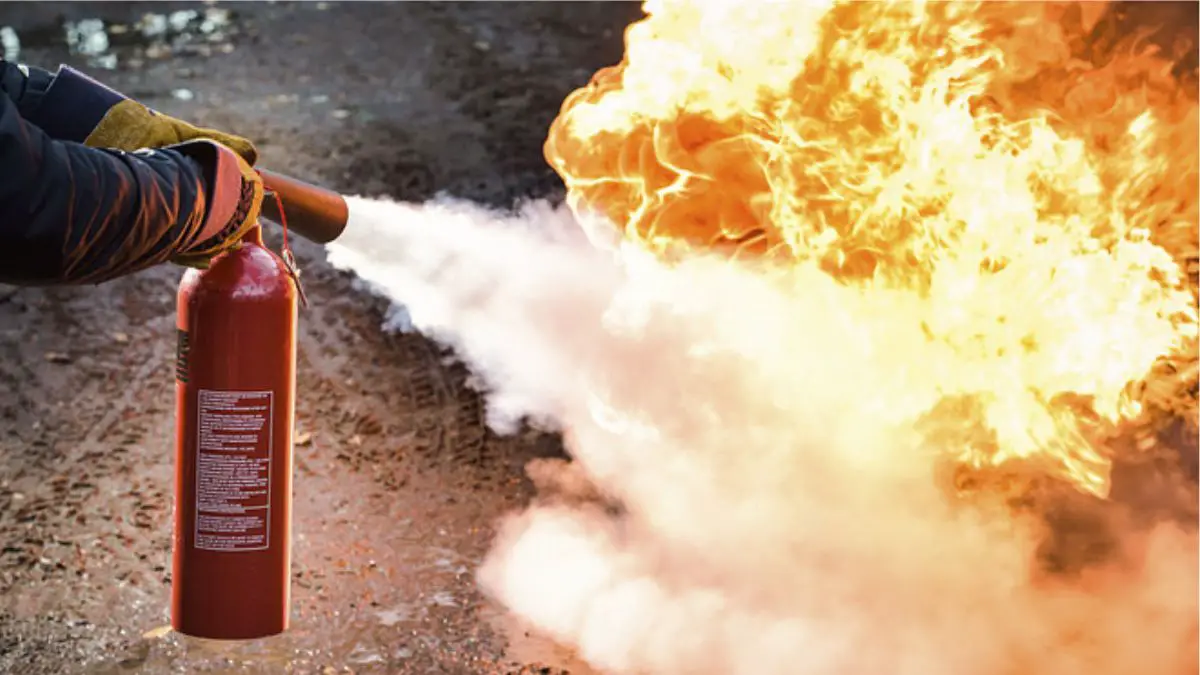Updated 3/24/2024
Fire extinguishers are an essential part of any safety plan. They can be used to put out small fires before they become big ones and can help keep you and your family safe in a house fire.
But with so many different types of fire extinguishers on the market, it can be difficult to know which one to choose.
Especially when various fire extinguishers are designed to handle different types of fires.
We rolled up our sleeves and compiled this handy guide for fire extinguisher newbies.
However, this guide is not just any guide. This guide will teach you everything you need to know about fire extinguishers.
That’s right…EVERYTHING. Fire classes, types of fire extinguishers, how to use them accordingly, and much more.
So settle in, grab a cup of coffee, and let’s get started!
Who Invented the Fire Extinguisher?
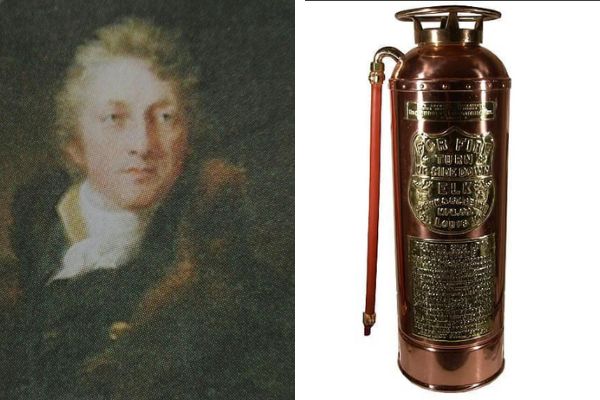
The 1818 invention of the fire extinguisher by English chemist George William Manby marked a significant advancement in fire safety technology.
Manby’s design was ingeniously simple yet effective. It comprised a leather bag filled with a solution of potassium carbonate, a compound known for its fire-extinguishing properties.
The user could deploy the solution onto a fire by pressing a valve, which released the liquid under pressure.
Manby was motivated by the devastating effects of fires he witnessed, which in those times, often resulted in significant loss of life and property due to the lack of effective means to combat them.
His invention came as a response to this dire need for a portable, quick-response device that could be deployed to control fires before they escalated.
The impact of Manby’s invention was immediate and profound. The extinguisher’s effectiveness was demonstrated in several notable instances, one of the most prominent being its use during the major fire at the House of Lords in 1834.
Over the years, Manby’s original design has undergone various modifications and improvements to enhance its efficiency and ease of use. Modern fire extinguishers use a range of substances, such as water, foam, dry powder, and carbon dioxide, to tackle different types of fires.
These advancements have significantly expanded the applications of fire extinguishers, making them more versatile and effective in controlling a wider array of fire classes.
Despite these advancements, the core principle of Manby’s invention—the use of a chemical agent to suppress fire—remains the cornerstone of fire-extinguishing technology today.
Fire Classes
Although most people are familiar with the general concept of fire, few know that there are different classes of fire.
The burning fuel type determines the fire class, and each class requires a different method of extinguishment.
It helps to be able to identify the class of fire you’re dealing with, so you can use the right equipment to put it out!
Class A Fires
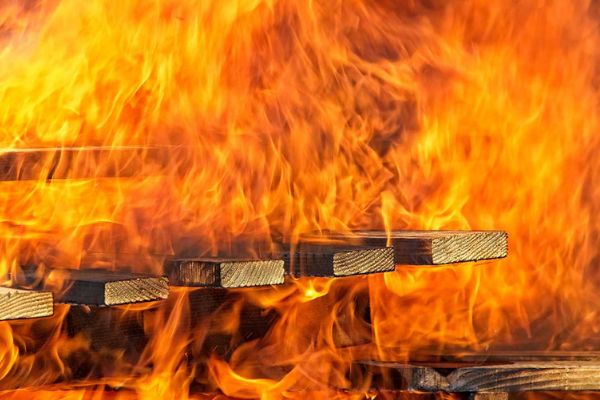
Class A fires involve ordinary combustibles such as wood, paper, cloth, and rubber. These fires are usually easy to extinguish, as they can be controlled by smothering or cooling the fuel source.
A class A fire is the most common type of fire. It is characterized by fast-moving flames that consume combustible materials such as wood, paper, and cloth.
Class A fires typically occur in homes and businesses and can be very destructive.
Water-based extinguishers are the most effective against class A fires.
Class B Fires
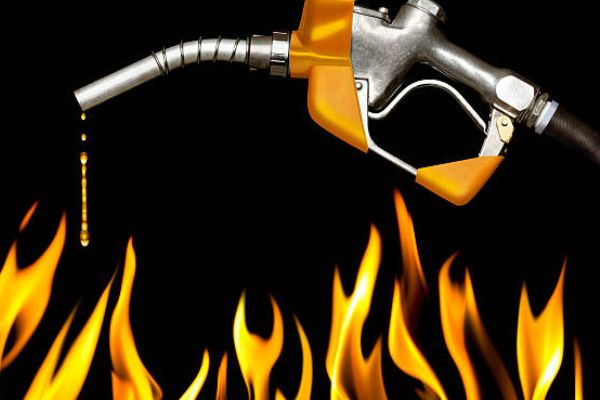
Class B fires involve flammable liquids such as gasoline, oil, and paint. These fires are more difficult to control, as they require special techniques for starving the fire of oxygen.
A Class B fire involves ordinary combustible materials such as paper, wood, or cloth. The defining characteristic of a Class B fire is that it produces a lot of smoke.
This smoke can quickly spread through a building and obscure vision, making it difficult to fight the fire.
Class B fires often start small but can quickly grow out of control if not extinguished early.
To put out a Class B fire, it is important to use a fire extinguisher designed for that purpose.
Class B extinguishers typically use water or foam to smother the flames and prevent them from spreading.
Class C Fires
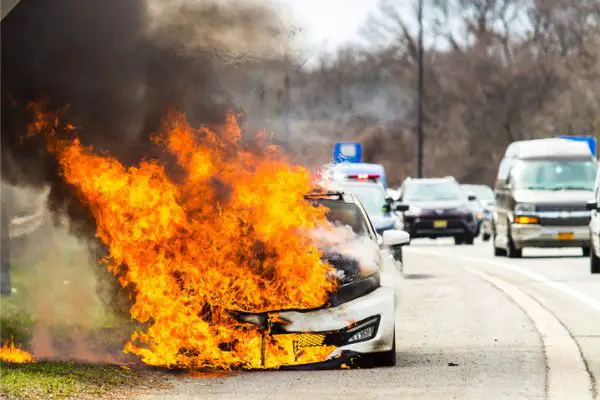
A Class C fire involves energized electrical equipment, such as motors, transformers, or switches. Class C fires are hazardous because water is a conductor of electricity and can cause serious injuries or even death if used to extinguish the fire.
Class C fires can quickly spread to other combustible materials if not controlled promptly.
A dry chemical or carbon dioxide extinguisher is the best way to extinguish a Class C fire.
Class D Fires
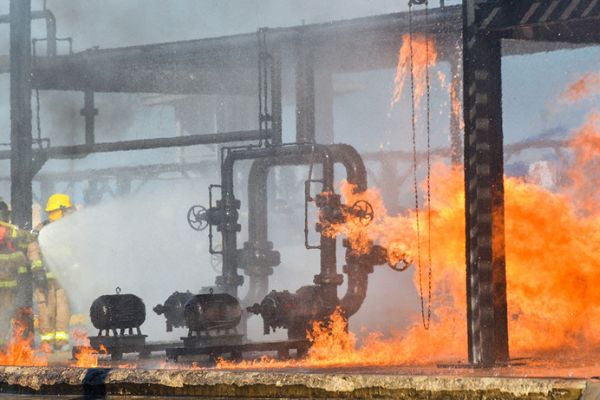
Class D Fires are fires that involve combustible metals. These fires require special dry powder extinguishers specifically designed to smother the fire by separating the oxygen atoms from the metal atoms.
Class D fires can be hazardous because the metal sparks can easily ignite surrounding materials, and the fire can spread quickly.
In addition, the heat from the fire can be so intense that it can cause the metal to vaporize, which can create hazardous fumes.
For these reasons, it is important to have a trained professional assess the situation before attempting to extinguish a Class D fire.
Class K Fires
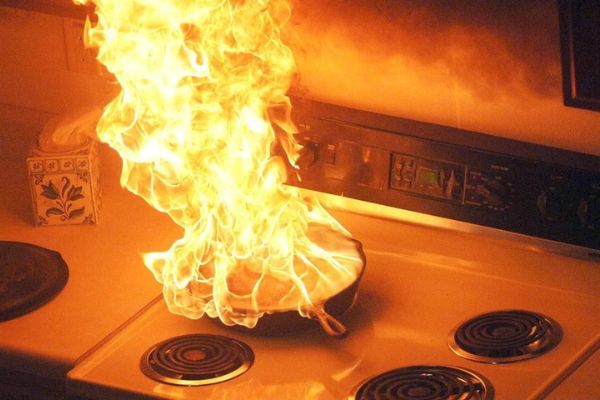
A Class K fire is a type of fire that involves cooking oils. These fires typically occur in commercial kitchens, where fryers and other cooking equipment are used daily.
Class K fires are very difficult to extinguish, as the oils can quickly re-ignite.
Consequently, Class K fire extinguishers are specifically designed for this type of fire.
They contain a special agent that breaks down the oils, allowing the fire to be extinguished.
Fire Extinguisher Classes
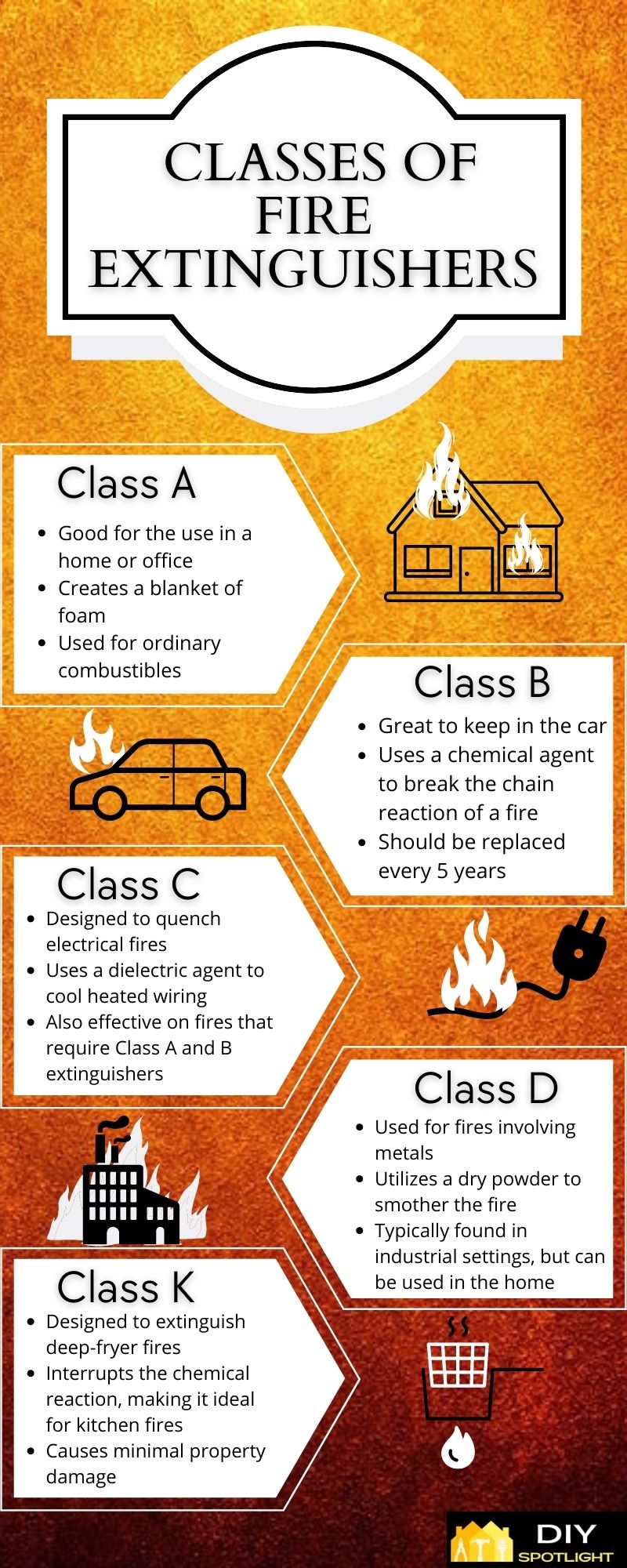
Not all fire extinguishers are created equal. Each fire extinguisher type is designed for specific types of fire.
For this reason, it is important to familiarize yourself with the different fire extinguishers classes and choose the right type for your needs.
Class A Fire Extinguishers
The Class A fire extinguisher is necessary for any home or business with wood, paper, and cloth furniture.
This type of extinguisher can be used on fires in ordinary combustibles like clothes without worrying about damaging anything else nearby because it can blanket the area with fire-suppressing foam.
Class B Fire Extinguishers
Class B fire extinguishers are an important addition to any vehicle. They are designed specifically for fires that involve flammable liquids like gasoline, oil, and paint.
Class B fire extinguishers use a chemical agent to break the chain reaction of a fire, and they are effective against three out of four classes of fire.
Class B fire extinguishers are typically stored in a vehicle’s trunk and should be replaced every five years.
Vehicle owners should familiarize themselves with the location and operation of their Class B fire extinguisher and check the gauge regularly to ensure that it is full.
Class B fire extinguishers can save lives and property in the event of a fire.
Class C Fire Extinguishers
Class C fire extinguishers are designed to quench fires in electrical equipment. The Class C rating is given to fire extinguishers used on live electrical fires, such as those caused by computers, appliances, or wiring.
These fires are particularly dangerous because water-based fire extinguishers can cause a shock if used on energized circuits.
Class C fire extinguishers contain a dielectric agent that quickly cools the heated wiring without conducting electricity, making them the safest way to extinguish an electrical fire.
In addition, Class C fire extinguishers are also effective on Class A and B fires, making them a versatile tool for any home or office.
Class D Fire Extinguishers
Class D fire extinguishers are designed for fires involving metals such as aluminum, magnesium, and titanium. The extinguishing agent used in these extinguishers is usually a dry powder, which smothers the fire and prevents it from getting oxygen.
Class D extinguishers are often found in industrial settings, where they can be used to quickly put out fires before they have a chance to spread.
But they can also be found in home kitchens, where they can be used to put out small grease fires or electrical fires. No matter where they’re kept, Class D extinguishers should always be within reach in an emergency.
Class K Fire Extinguishers
Class K fire extinguishers are essential for businesses that use cooking oils and fats. These extinguishers are specifically designed to extinguish deep-fat fryer fires, which can be difficult to put out with water alone.
Class K extinguishers work by interrupting the chemical reaction that fuels the fire, making them an effective choice for quickly putting out kitchen fires.
In addition, Class K extinguishers are often less damaging to property than other types of extinguishers, making them a good choice for businesses that want to minimize damage in the event of a fire.
Fire Extinguisher Types
There are several different fire extinguishers, each designed for a specific fire class. Here are the five fire extinguisher types and how they work!
Foam Fire Extinguishers
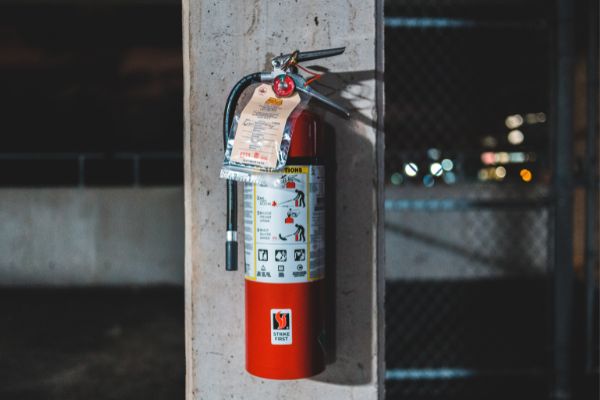
Foam fire extinguishers are an essential tool for fighting fires involving combustible materials. The foaming agent quickly smothers the flames, preventing them from spreading and making it easier to extinguish them.
Foam fire extinguishers are most effective on Class A and B fires, which involve combustible materials such as wood, paper, and flammable liquids.
Because the foam can also help cool hot surfaces, foam fire extinguishers are also effective in Class C fires involving electrical equipment.
Foam fire extinguishers should be replaced every five years or sooner to ensure that they will be effective in case of a fire.
CO2 Fire Extinguishers
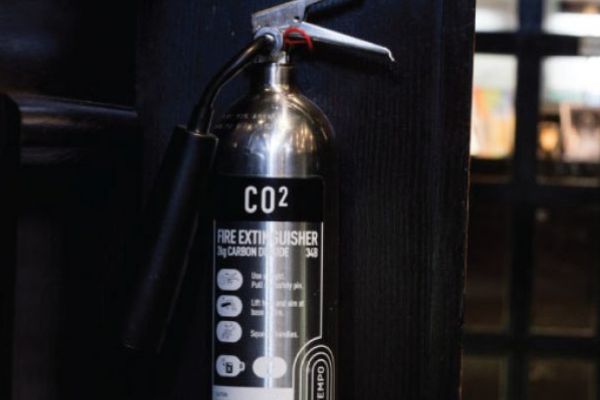
CO2 fire extinguishers are common fire extinguishers that can be used on Class B and Class C fires. CO2 extinguishers work by displacing the oxygen in the air, which smothers the fire.
They should be replaced every five years.
Some benefits of CO2 fire extinguishers include their relatively long shelf life and ability to fight fires in enclosed spaces. Additionally, CO2 fire extinguishers leave no residue, making them ideal for electrical fires.
However, CO2 fire extinguishers can be expensive and may not be effective on large fires.
Wet Chemical Fire Extinguishers
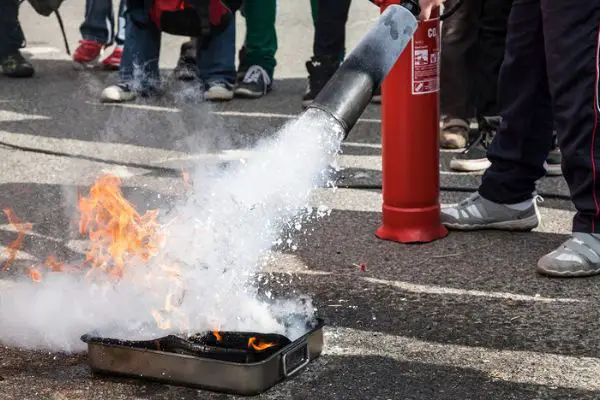
Wet chemical fire extinguishers are used to put out Class A, B, and C fires, making them ideal for use in various settings. Wet chemical extinguishers cool the fire and create a barrier between the fuel and the oxygen.
This prevents the fire from reigniting and allows it to be extinguished quickly and safely. Wet chemical extinguishers should be replaced every six years to ensure they remain effective.
Dry Chemical Fire Extinguishers
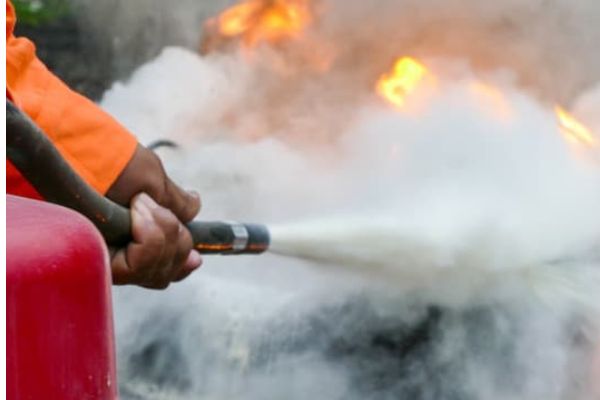
A dry chemical fire extinguisher is a type of fire extinguisher that uses a powder to smother and extinguish fires. They are effective on Class A, B, and C fires and are the most common type of fire extinguisher.
However, dry chemical extinguishers have a shorter expiration date than pressurized water extinguishers. They should be replaced every five years or so.
Dry chemical fire extinguishers create a barrier between the fuel and the oxygen in the air. This interrupts the chemical reaction that causes a fire, effectively smothering it.
They are most effective on small fires confined to a single object, such as a wastebasket or a piece of machinery.
They can also be used on larger fires, although they may not be as effective.
Pressurized Water Fire Extinguishers
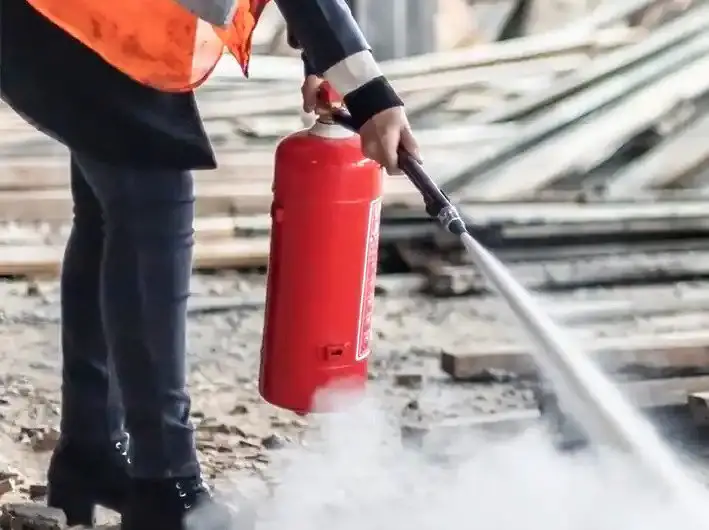
As the name suggests, pressurized water fire extinguishers use a stream of water to put out fires. They are especially effective on Class A fires involving combustible materials like paper and wood.
However, they are not as effective on Class B or C fires involving flammable liquids and electrical equipment. Pressurized water extinguishers also have a longer expiration date than dry chemical extinguishers.
So if you’re looking for an extinguisher that will provide long-lasting protection, a pressurized water fire extinguisher is a good choice. Just be sure to replace it every ten years.
What is the Proper Way to Use a Fire Extinguisher?
A fire extinguisher is only as effective as the people who know how to use it correctly. The steps below will walk you through the proper way to use a fire extinguisher.
- Pull the pin at the top of the fire extinguisher. This will break the tamper seal and allow you to discharge the extinguisher.
- Aim the nozzle of the fire extinguisher at the base of the fire.
- Squeeze the lever slowly and evenly until the extinguisher discharges.
- Sweep the nozzle from side to side at the base of the fire until it is extinguished.
- If the fire re-ignites, repeat steps 2-4.
- Once the fire is extinguished, discharge the extinguisher until it is empty.
- Replace the fire extinguisher in its designated location.
Fire Extinguisher Servicing & Recharging
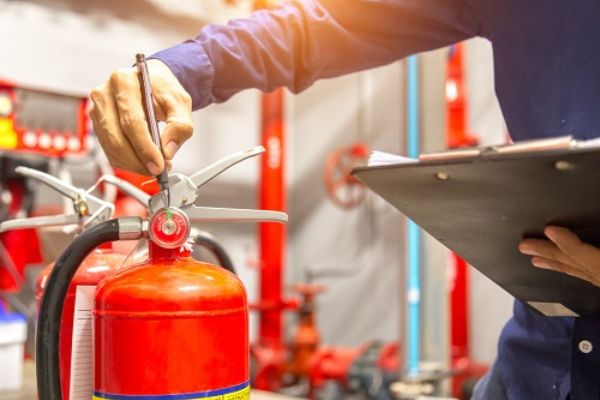
One important part of maintenance is to have your fire extinguisher regularly serviced by a certified technician. This will ensure that the extinguisher is in good working order and can function properly in the event of a fire.
Fire extinguisher servicing typically includes:
- A Visual Inspection
- A Pressure test
- A Recharge
Recharging your fire extinguisher is essential because it replaces the fire-suppressing chemicals used when the extinguisher is discharged.
Because of this, it is important to ensure your extinguisher is recharged as soon as possible after it has been used.
You can typically find a local service provider by doing a Google search for “fire extinguisher servicing near me.” Your local fire department will often service your fire extinguisher free of charge!
How to Get Rid of Old Fire Extinguishers
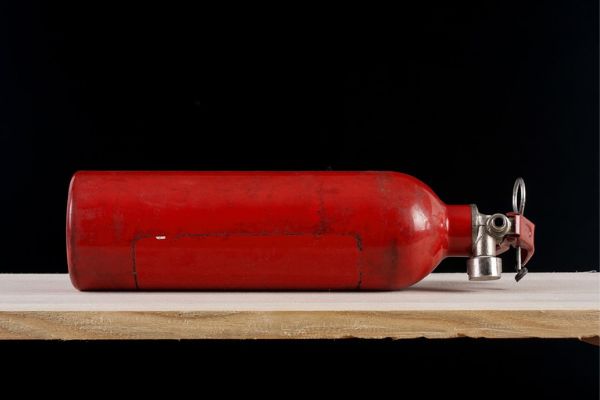
If you have an old, expired fire extinguisher, it’s important to dispose of it properly. But how?
The best way to dispose of an old fire extinguisher is to take it to a certified recycling center. Most extinguishers contain pressurized gas or chemicals that can be harmful if not handled correctly.
A certified recycling center will ensure that the extinguisher is properly disassembled and that the materials are disposed of safely.
You can also check with your local fire department to see if they offer a fire extinguisher recycling program. If you can’t find a certified recycling center or fire department program, you can contact your local hazardous waste disposal facility.
Be sure to call ahead to find out what types of materials they accept and what the facility’s procedures are for disposing of fire extinguishers.
How to Clean Up Fire Extinguisher Powder
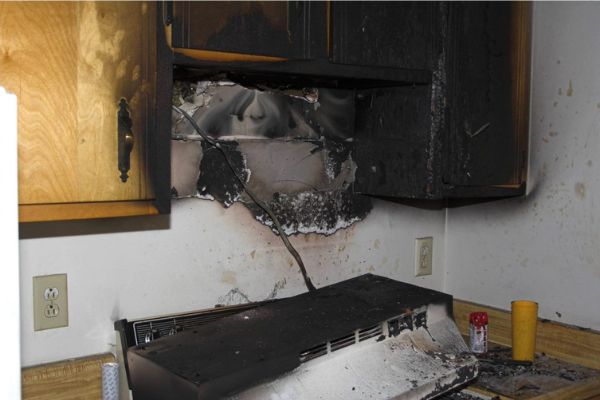
Dry chemical fire extinguishers are an important tool for putting out fires. They work by smothering the fire with a fine powder, which cuts off the oxygen supply and prevents the fire from spreading.
However, dry chemical fire extinguishers contain flame-retardant powder that can be corrosive, so cleaning up any residue as quickly as possible is important.
If you’ve ever had to use a fire extinguisher, you know how difficult it is to clean up the power residue afterward. Here are a few tips to help make the process easier!
- Vacuum up as much loose powder as possible. Empty the vacuum bag or canister afterward to avoid breathing in the dust.
- Use a damp cloth to wipe up any remaining powder. Dispose of the cloth in a sealed bag, so it doesn’t spread the fire extinguisher powder around.
- To neutralize the residual chemicals, mix a solution of one part baking soda or isopropyl alcohol with two parts water and spray it on the affected area. Once the chemical reaction has occurred, you can wipe away the solution with a damp cloth.
- Finally, wipe down the area with soap and hot water to prevent the spread of bacteria and viruses.
- After rinsing the soap away with water, use a room fan to dry the area.
Frequently Asked Questions (FAQs)
How much does it cost to refill a fire extinguisher?
The answer depends on the type of fire extinguisher and the company you use. For instance, a small handheld extinguisher might cost between $15 and $25 to refill, while a sizeable wheeled unit could cost as much as $200. The best way to get an accurate estimate is to contact a local fire protection company and request a quote. Your local fire department will often service your fire extinguisher free of charge, so that’s also worth looking into!
How often should fire extinguishers be checked?
According to the National Fire Protection Association, fire extinguishers should be checked monthly to ensure they are fully charged and in working order.
Additionally, it is important to perform a quarterly test of the extinguisher by discharging it into an appropriate container.
What’s the best place to store a fire extinguisher on a boat?
The best place to store a fire extinguisher on a boat is typically in the galley, near the entrance to the engine room, or in the aft cockpit. It is important to ensure that the extinguisher is accessible and not obstructed by other objects. In addition, it is important to regularly check that the extinguisher is fully charged, kept out of direct sunlight, and in good working order.
Is fire extinguisher powder toxic?
The powder itself is not considered to be toxic. The main dangers of fire extinguisher powder come from inhaling the dust or getting it into your eyes or on your skin. If you are exposed to fire extinguisher powder, it is important to seek medical attention immediately.
Inhaling the dust can irritate your lungs and cause difficulty breathing. Getting the powder in your eyes can cause irritation and even temporary blindness.

